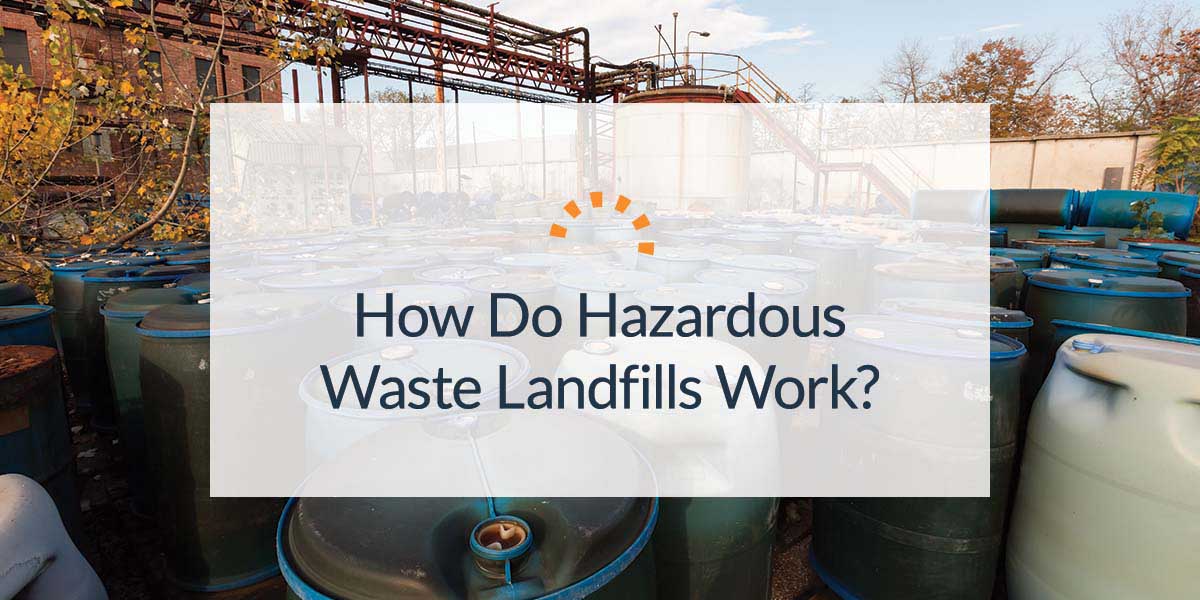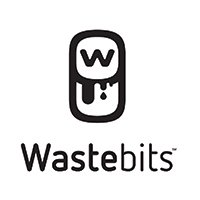
When hazardous waste isn’t disposed of properly, it can be harmful to human health and unsafe for the environment. If mishandled, it can seep into the ground and pollute the water we drink or the soil we use — or even disperse into the air we breathe. That’s why hazardous waste landfills are designed to collect, treat and safely dispose of harmful materials.
hazardous waste (n): a toxic, reactive, ignitable or corrosive material that poses a substantial or potential threat to public health and the environment
You may use hazardous materials in your home every day and not even realize it. For example, paints, auto fluids and batteries are considered harmful items that can’t go in your regular trash. These items are not dangerous if you use them according to the directions on their labels, but they are typically prohibited from regular landfills because they can pose safety concerns if not handled properly. That’s why it’s important to take them to a hazardous waste drop-off facility and check with your city or county about specific guidelines.

Also known as a toxic waste landfill, this is a facility used specifically for the disposal of hazardous materials that’s been carefully designed to minimize the chances of hazardous waste being released into the environment.

Hazardous waste facilities are regulated more strictly than the regular landfills where your weekly trash gets dumped. These rules ensure that disposing of dangerous items does not contaminate groundwater that may be used and consumed by people or animals in the area.
One of the most important ways these facilities keep the surrounding environment safe from the materials tossed in a hazardous waste landfill is to keep ten feet of separation between the bottom of the landfill and the bedrock or groundwater table below. Above these ten feet of space are two impermeable liners and a leachate collection system.
leachate (n): a contaminated liquid created by water filtering through contaminants and becoming contaminated itself
The double leachate collection system consists of a network of perforated pipes placed above each liner. The upper system prevents accumulation of leachate in the landfill, and the lower system is a backup. Then, leachate is pumped to a treatment plant.
“Think of it like a bathtub. Landfills are designed to keep the materials inside their own containment areas. At the bottom of the containment area is the leachate system. If anything seeps through, there’s an alert to notify operators of where a leak may be.”
Dan Collins, CEO | Wastebits
This is a series of deep wells drilled in and around the site. The wells make it easy to routinely test groundwater for contamination to detect leaks in liners and the leachate collection system. If leaks occur, the wells can be pumped to intercept the polluted water and bring it to the surface for treatment.
To get rid of hazardous liquid detected by the monitoring system, the facility can use deep-well injection. This involves pumping liquid waste at high pressures through a steel casing into a porous layer of limestone or sandstone. The liquid is forced into the pores and fissures of the rock where it will be permanently stored.
These injection zones must take place below a layer of impervious rock or clay, meaning they can extend more than half a mile below the surface. This process requires little, if any, pretreatment of the waste, but it is possible for leaks to occur and pollute subsurface water supplies, bringing us back to the groundwater monitoring system.
Once a hazardous waste landfill is full, the operators aren’t off the hook. They need to cover the landfill with an impermeable cap and are required to comply with inspection, monitoring and release requirements. These efforts are meant to reduce the amount of leachate in the landfill to prevent runoff and run-on from damaging the cover. This also protects the area around the landfill.
Closure and post-closure care involve:
“The post-closure side of the business is equally as important as when the site is running. For every ton or cubic yard of debris that comes to the site, there’s a dollar amount set aside to properly care for the site post-closure. I’ve found that the companies I know of that own hazardous waste landfills are very responsible and not willing to trade off profit for risk and liability. They would shut down the site before risking the community.”
Dan Collins, CEO | Wastebits
While we know that hazardous waste is safely regulated once it's taken to a disposal site, it's also important that it's handled with care before it arrives. When you take hazardous items to a local drop-off facility or schedule a pickup, make sure liquid waste is properly sealed and other items won’t be dangerous to touch. While we generally don’t collect hazardous waste in our containers, if you’re renting a dumpster and have a few items we can't accept, our experienced team will help you find the solution you need to safely get rid of these materials.
